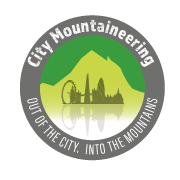

Feeling hot, hot, hot
Near record temperatures for Wales and Northern Ireland, tinder dry terrain in Greater Manchester and Norfolk due to a jet-tream out of...


Is 'classic' an over-used word?
Classic cars, classic design, a timeless classic, the list goes on. Given a definition of 'an outstanding example of a particular style;...


Monkey Weekend
A few years ago, I reached the summit of Western Europe with one of my best mates. We self-guided, we were inexperienced, we were naïve,...


getting one's bearings
Having fixed your position at a particular grid reference on your map and having discerned the difference between your orienting lines...


'we the globe can compass soon ...'
Very simple things are compasses, not at all like Shakespeare's plays, a bit of plastic with a needle that always points north. Really,...


what on earth is an easting?
There are loads of different types of maps but each has one thing in common: They all have grid of squares overlying the topographical...


why are there squares on maps?
Maps come in varying sizes, usually too large and doing its best to rip itself from your hands on a windy day, and they come in varying...


Dave's favourite mountain
Thinking skywards I remember the foothills of the Himalaya where I lived in my late teens, far higher than I have ever ventured since, I...



































